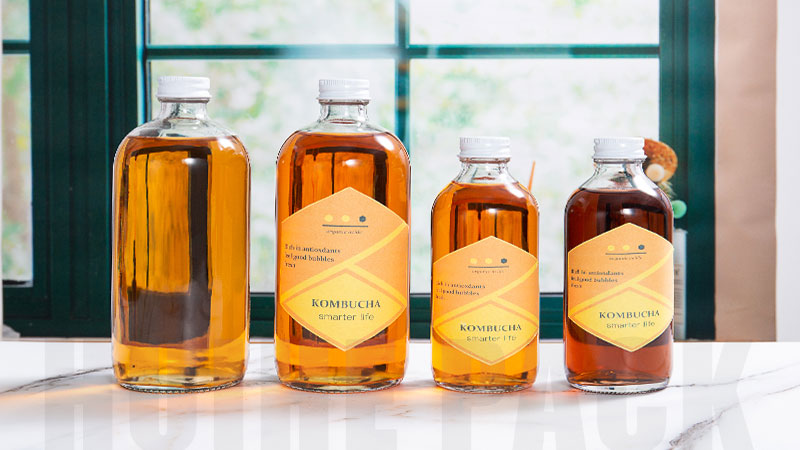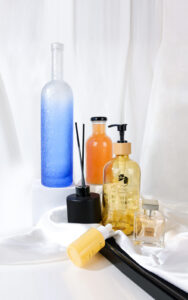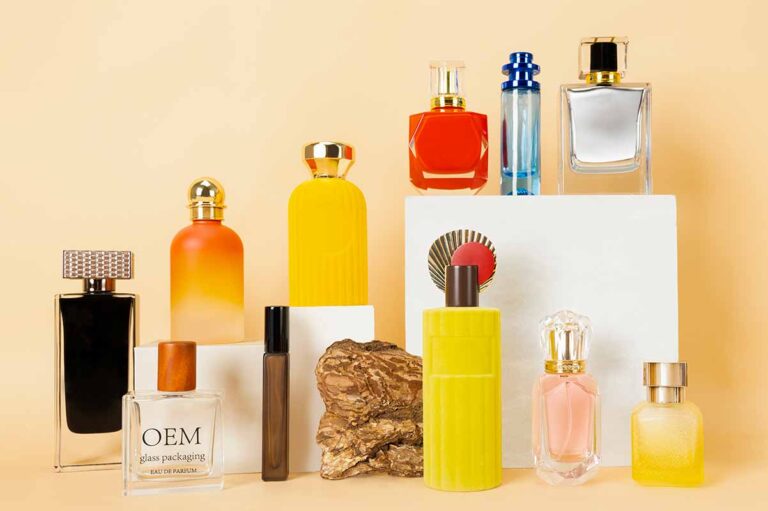Brewing kombucha at home is more than a trend—it’s a lifestyle. This fizzy, tangy, probiotic-rich drink has taken the world by storm, and for good reason. Kombucha offers a refreshing taste and a wealth of health benefits, but making it at home requires attention to detail—especially when it comes to choosing the right bottles. The type of bottle you use can make or break your brew. The right bottle ensures carbonation, preserves flavor, and prevents contamination, while the wrong one can lead to flat or even spoiled kombucha.
In this comprehensive guide, we’ll walk you through everything you need to know about picking the best bottles for kombucha, from bottle types and sizes to caps, accessories, and best practices. Whether you’re a beginner or an experienced brewer, this article will help you bottle like a pro.

Introduction to Kombucha Brewing
Kombucha is a fermented tea made with a SCOBY (Symbiotic Culture of Bacteria and Yeast), sweet tea, and a starter liquid. During fermentation, the SCOBY consumes the sugar in the tea, producing a fizzy, tangy beverage packed with probiotics. To brew kombucha at home, you’ll need a few essentials:
- A brewing jar (usually 1 gallon or more)
- A healthy SCOBY and starter tea
- Food-grade glass bottles for bottling
- A bottle capper or swing-top caps for sealing
After primary fermentation in a jar, the kombucha undergoes secondary fermentation in bottles, where it develops carbonation and extra flavor. This is where the choice of bottle matters most.
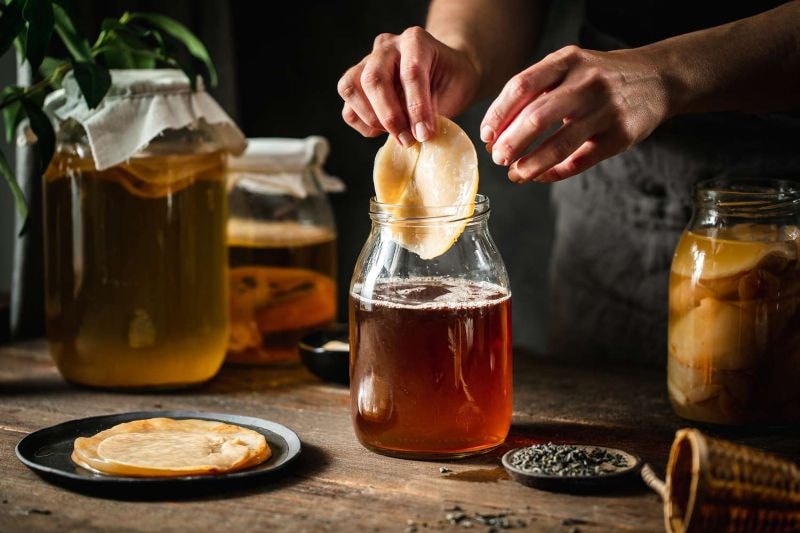
Why Bottle Choice Matters for Kombucha
Bottles do more than just hold your kombucha—they influence its carbonation, flavor, and safety. A proper bottle will:
- Withstand pressure from carbonation (so it doesn’t explode or leak)
- Provide an airtight seal to trap CO₂ for natural fizz
- Prevent contamination by keeping out bacteria and mold
- Preserve flavor without imparting any unwanted taste
Using the wrong type of container—like thin plastic or mason jars with loose lids—can result in flat kombucha or even dangerous bottle breakage. So let’s explore the best options.
The Best Bottles for Kombucha: Key Features
When shopping for kombucha bottles, keep these features in mind:
- Material – Glass is the gold standard. It’s non-porous, easy to sanitize, and doesn’t react with acidic kombucha.
- Seal Type – Airtight seals are essential for carbonation. Swing-top (flip-top) bottles or bottles designed for beer and soda work best.
- Size – Common sizes range from 12 oz to 32 oz for individual servings, while 1-gallon jugs are ideal for storage or secondary fermentation.
- Pressure Resistance – The bottle should handle high carbonation pressure without cracking.
- Reusability – Choose sturdy, reusable bottles for sustainability and cost-effectiveness.
Top Bottle Options for Kombucha Brewing
1. Swing-Top Bottles
Also known as flip-top bottles, these are a kombucha brewer’s favorite. They have a ceramic or plastic stopper attached to a metal clasp, creating a strong, airtight seal. Benefits include:
- Excellent for carbonation
- Easy to open and reseal
- Durable and reusable
Common sizes: 16 oz (500 ml) or 32 oz (1 liter).
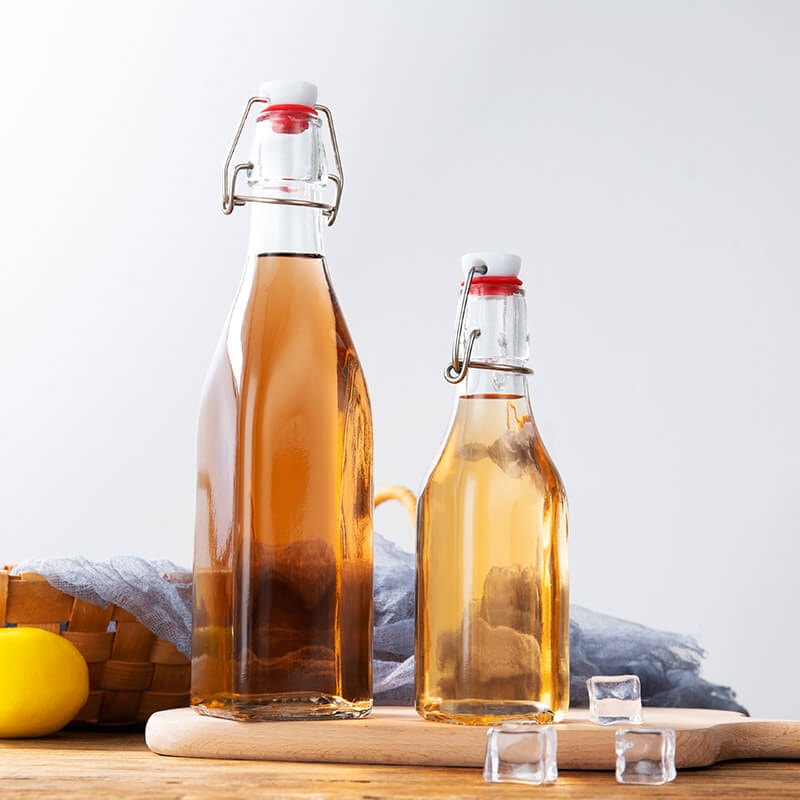
2. Clear Glass Bottles
Clear glass lets you see what’s happening inside your kombucha—perfect for monitoring carbonation and sediment. However, keep them away from sunlight to avoid off-flavors.
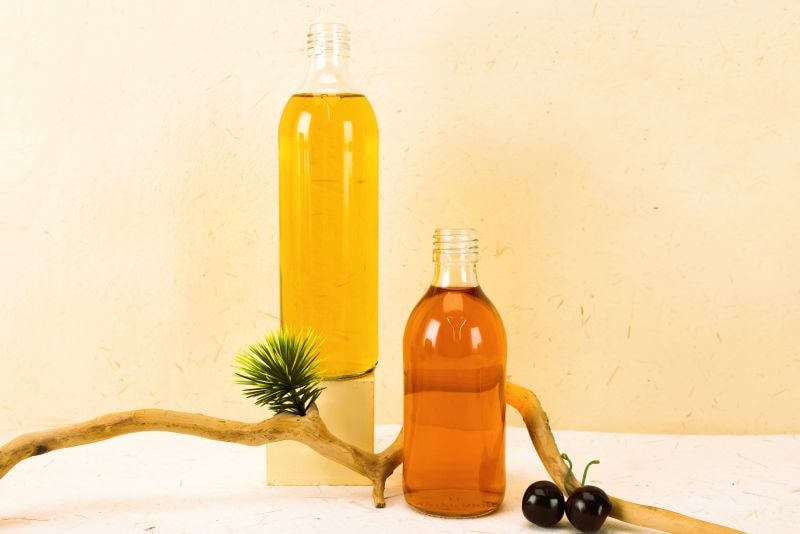
3. Amber Glass Bottles
Amber bottles protect your kombucha from UV light, which can damage the drink’s delicate probiotics and flavor. These are a great choice if you store bottles in a bright kitchen.
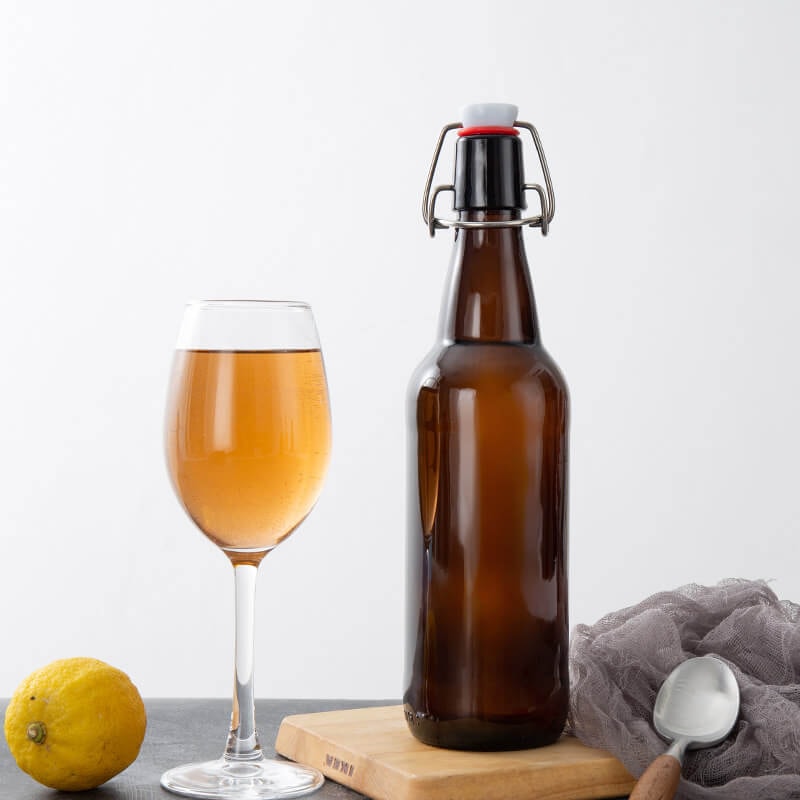
4. Mason Jars (For Storage Only)
Mason jars are widely available and budget-friendly, but they don’t seal tightly enough for carbonation. Use them for primary fermentation or short-term storage—not secondary fermentation.
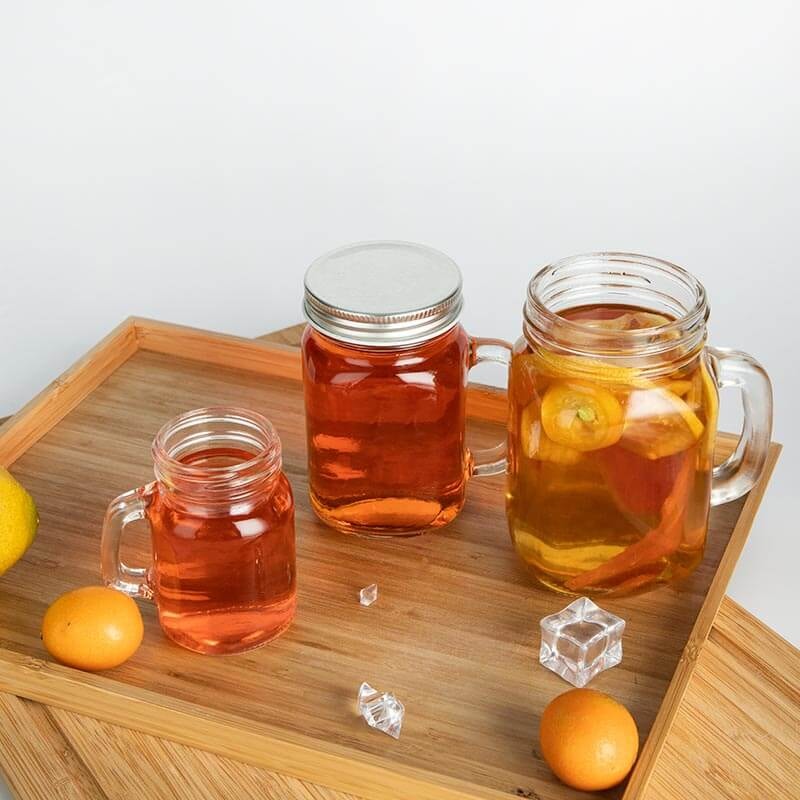
5. Recycled Beer or Soda Bottles
If you’re on a budget, you can reuse beer or soda bottles with new caps. These are designed to hold pressure and work well for kombucha. Just ensure they are properly sanitized.
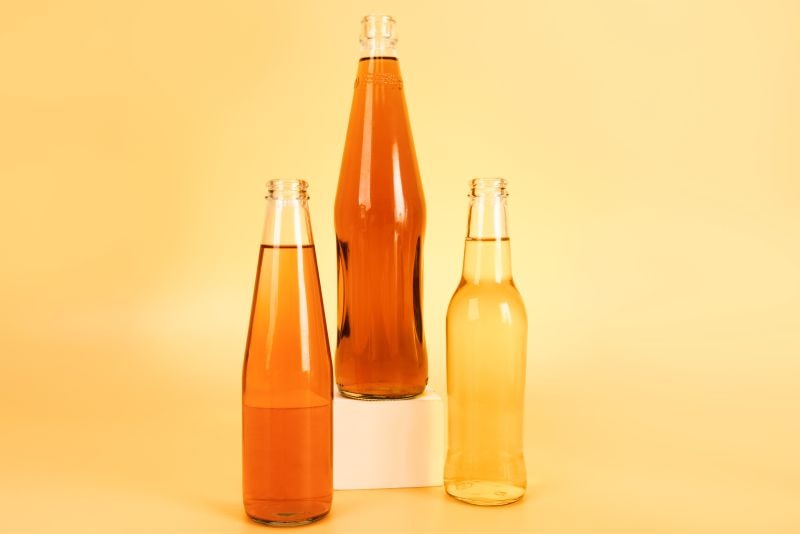
Bottle Sizes: What’s Right for You?
- 16 oz (500 ml) – Perfect for individual servings; easy to carry and store.
- 32 oz (1 liter) – Ideal for larger servings or flavor experiments.
- 1 gallon – Best for bulk storage or brewing continuous batches.
Tip: If you like flavoring your kombucha with fruits or herbs, choose bottles with a wider neck for easier filling.
Bottle Caps and Accessories
A bottle is only as good as its seal. Here’s what you need:
- Replacement Caps – Always keep extras on hand. Over time, seals wear out.
- Bottle Capper – If you use standard beer bottles, a capper ensures a secure seal.
- Funnels – Stainless steel funnels make filling bottles cleaner and faster.
- Bottle Brushes – Essential for scrubbing inside bottles and removing residue.
- Bottling Kits – Many homebrewing suppliers sell complete kits with bottles, caps, and cleaning tools.
Fermentation and Storage Best Practices
- Secondary Fermentation: After your primary ferment, pour kombucha into airtight bottles for 3–7 days at room temperature to develop carbonation.
- Temperature Control: Store bottles in a dark, room-temperature spot. Avoid sunlight and extreme heat.
- Refrigeration: Once carbonation reaches your desired level, move the bottles to the fridge to slow fermentation and prevent over-carbonation.
- Safety Tip: Burp bottles occasionally to release excess pressure and prevent explosions.
Tips for a Perfectly Fizzy Brew
- Use a healthy SCOBY and fresh starter tea.
- Add a little sugar or fruit before bottling—this feeds the yeast and boosts carbonation.
- Seal bottles tightly and store at a consistent temperature.
- Monitor carbonation daily. Once fizzy, refrigerate immediately.
- Keep everything clean and sanitized to avoid mold or spoilage.
Common Bottling Mistakes to Avoid
- Loose seals → Flat kombucha.
- Sunlight exposure → Off-flavors and weakened probiotics.
- Over-carbonation → Exploding bottles.
- Dirty equipment → Contamination and spoilage.
- Using plastic → Can leach chemicals and hold odors.
Advanced Bottling Techniques
Want to take your kombucha to the next level?
- Try continuous brewing in a large vessel for a steady supply.
- Experiment with secondary flavoring—add berries, herbs, or ginger for unique profiles.
- Use different sugars like honey or maple syrup for distinct tastes.
- Add kefir grains during secondary fermentation for extra probiotics.
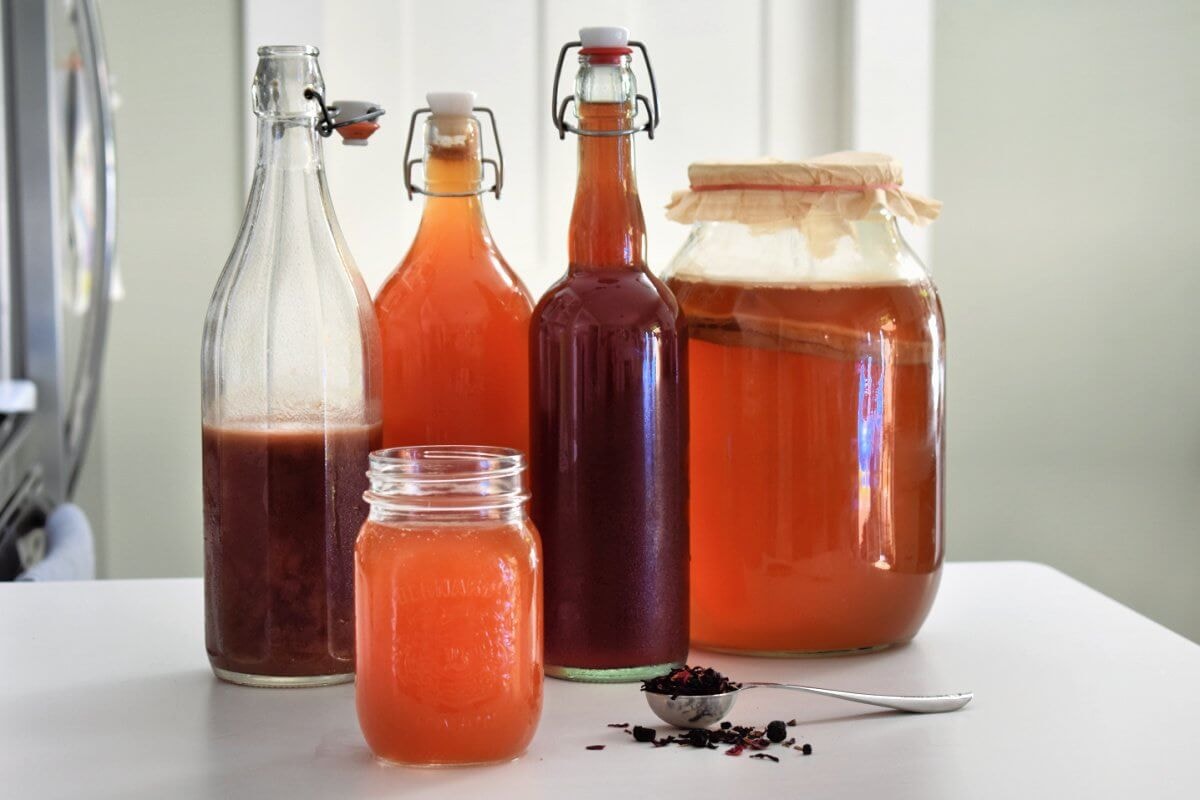
Troubleshooting Bottling Problems
- Flat brew? → Increase sugar in flavoring, check seal tightness, and extend secondary fermentation.
- Too fizzy? → Burp bottles daily or refrigerate sooner.
- Contamination? → Deep-clean all equipment and replace worn caps.
Resources for Kombucha Brewers
- Online Communities: Join kombucha forums and Facebook groups for tips and troubleshooting.
- Books & Courses: Invest in brewing guides for advanced techniques.
- Supplies: Look for trusted suppliers offering kombucha-specific bottles, caps, and tools.
Getting Started
If you’re new to brewing, start simple:
- Buy a starter kit (includes SCOBY, culture, and instructions).
- Get a few 16 oz swing-top bottles for secondary fermentation.
- Keep notes in a brewing journal to track flavor and carbonation success.
Conclusion
The right bottles make all the difference in brewing kombucha that’s safe, fizzy, and flavorful. Swing-top glass bottles are the gold standard, but clear or amber glass bottles with airtight seals work just as well. Remember: cleanliness, proper sealing, and temperature control are your best friends for successful brewing.
So stock up on the right bottles, get creative with flavors, and enjoy the rewarding experience of crafting your own kombucha. Cheers to a fizzy, probiotic-packed drink that’s good for your gut and your taste buds!The Best Bottles for Kombucha: A Complete Guide for Perfect Fermentation
Brewing kombucha at home is more than a trend—it’s a lifestyle. This fizzy, tangy, probiotic-rich drink has taken the world by storm, and for good reason. Kombucha offers a refreshing taste and a wealth of health benefits, but making it at home requires attention to detail—especially when it comes to choosing the right bottles. The type of bottle you use can make or break your brew. The right bottle ensures carbonation, preserves flavor, and prevents contamination, while the wrong one can lead to flat or even spoiled kombucha.
At HUIHE PACK, we supply high-quality glass bottles for beverages, including kombucha bottles designed for perfect carbonation and durability. Whether you need custom designs, wholesale orders, or eco-friendly options, we’ve got you covered.


